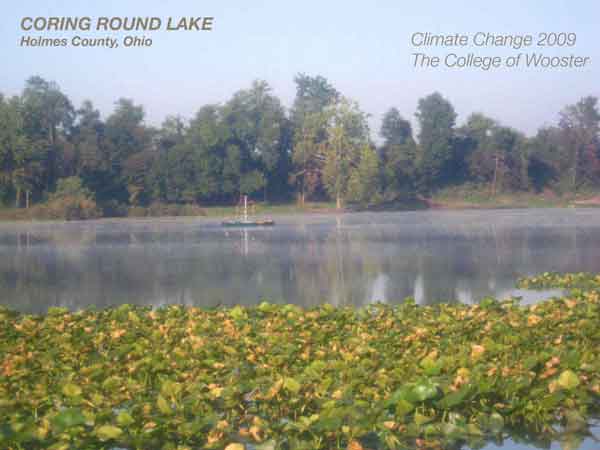
Dr. Tom Lowell and two University of Cincinnati graduate students, Esteban and Bill, were kind enough to make the trip to Long Lake to help the Wooster Climate Change class extract two long (14 meter) sediment cores from the middle of the lake.
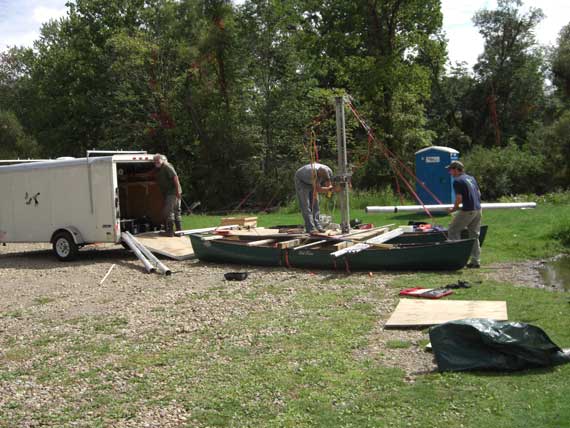
The first step was to build the raft. Dr. Lowell (aka "the core boss") is in the trailer. Bill and Rob assemble the parts and pieces.

Terry Workman (our course TA) drives the geophysical craft. Under the tarp is Esteban who is collecting bathymetric and seismic data. Based on these data a core site was chosen.

The core boss gives us a short course on the operation of the coring platform. Dr. Lowell has custom-built this rig and he points out the automated coring system. A hydraulic system drives the Livingstone corer into and out of the mud.
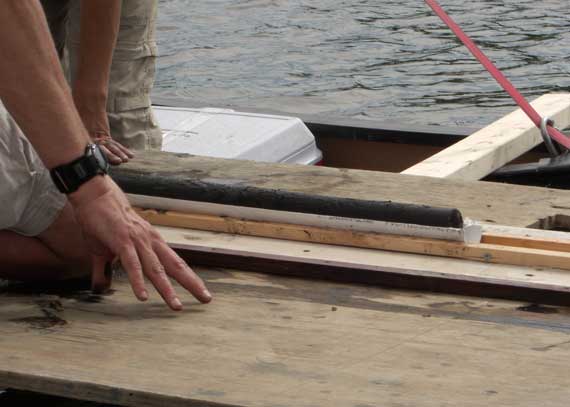
Well into the Holocene - Esteban wraps up another meter of lacustrine sediment.
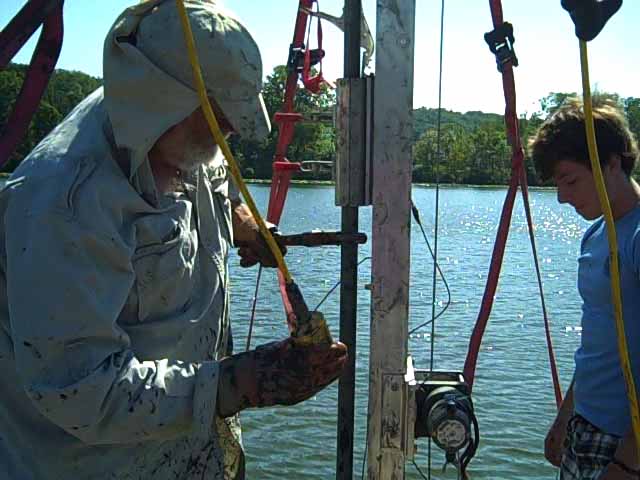
Tom and Terry work the platform sending the piston corer down for another meter.
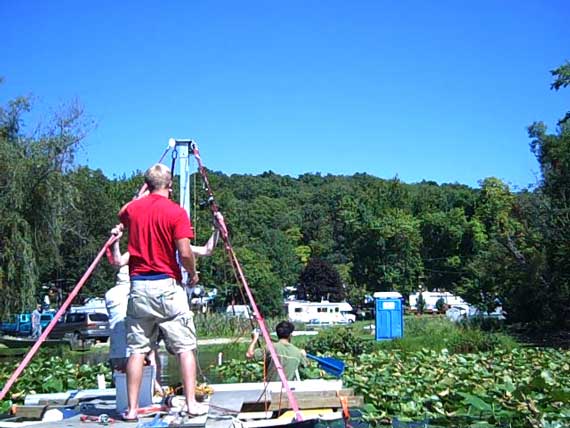
The crew rows to shore. The class will now obtain organic material for radiocarbon dating and then the work begins analyzing a suite of parameters in the cores. Class members Lindsey and Amanda located a stick at the base of the core, this has been sent for a radiocarbon age and should give us an estimate of the timing of deglaciation in the region. Will Hansen (red shirt) will be using the upper part of the core together with our other collections from Round, O'Dell and Browns Lake for his Independent Study.



Pingback: Wooster Geologists » Blog Archive » Processing the Lake Core (and Tree Cores)
I beg your indulgence.
My husband just announced from his perch in his recliner – laptop in place – that there are NO natural lakes in Ohio.
Having nearly drowned in Round Lake as a toddler – my interest is peeked beyond the casual by the notion that – once again – man’s interference with the natural order of things – almost led to my demise. Oh! the unimaginable loss.
Are Round and Long Lakes man-made?
My thanks in advance for your patience in taking the time to settle this issue for two soon-to-retire-in-Wooster Sylvania, Ohioans.
Hi Catherine,
Round and Long lakes are natural – they have been modified quite a bit – but they formed at the end of the last ice age as the ice retreated and left behind pock marks on the landscape that sealed off and have been holding water ever since.
We know this as when we drill to the bottom of the lake sediments at each of these lakes and then recover organic materials at the bottom of the stack of lake sediments they radiocarbon date to about 15,000 years ago time and again. Of course there are some lakes and reservoirs in the area that are not natural and they likely outnumber the natural ones.
Thanks for reading our blog.
Greg
Thanks so much for the information! It’s nice to have one’s assumptions confirmed.
Cathy Wilson